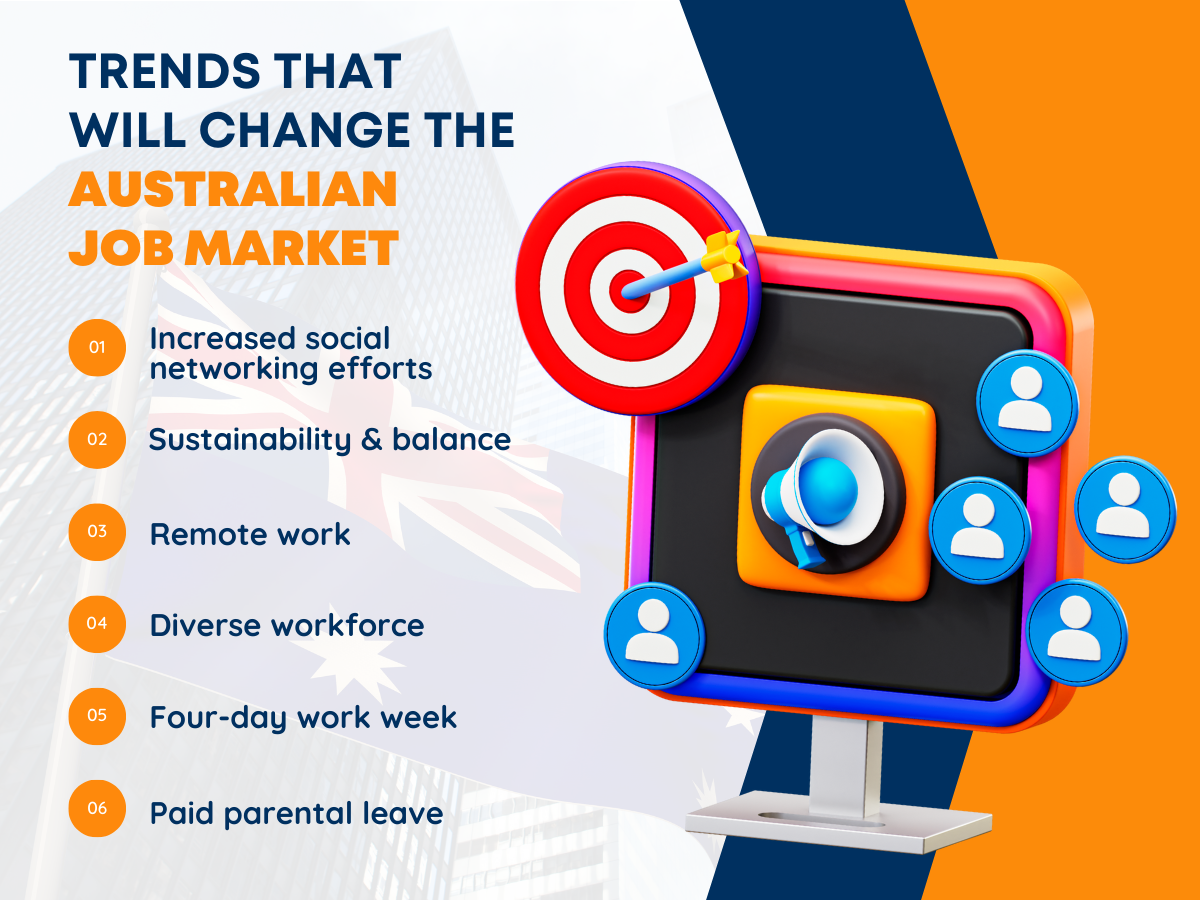In the past couple of years, Australia’s job market was greatly impacted by the effects of the COVID-19 pandemic. As the new year rolls in, what can remote working do for the country’s future?
In this article, we will look at the state of Australia’s workforce amidst the pandemic and the rising trends as companies nationwide switched to remote working.
What has been the state of the Australian job market in recent years?
The country had seen so much change from the transition to remote working to the “Great Resignation,” a time when a wave of people decided to quit their jobs for greener pastures.
But, there is more to it. Here are Australian job markets facts you might have not known:
The country actually has a small job market
To be specific, Australia’s labour force is limited to a few cities only. In fact, we can see the concentration in three states specifically: Victoria, New South Wales, and Queensland.
People relied more on Australia’s hidden job market
There is nothing fancy to it. It is actually the job referrals from friends, old work colleagues, and even recruiters.
Job referrals are a common occurrence wherever you are in the world. But in Australia, according to the government’s statistics, 1 in 3 job vacancies is not advertised anymore. Basically, the job posts seen on job marketing portals and on a company’s career page are just the tip of the iceberg.
Similar job vacancies are posted by different recruiters
If you look at an Australian job marketing portal, you will see duplicate job posts. Some even go so far as to omit the name of the client or company. All these can be very confusing for interested applicants and potentially hurt their chances.
There are still outdated job posts
Sometimes, it can be too good to be true. Sadly, this also applies to job vacancies in Australia.
There are two reasons why this happens: One, because it is a duplicate job post and the recruiter did not bother to take it down anymore. Two, some recruiters deliberately do this to inflate the interest towards the company they work for.
Job turnover spiked at the start of the pandemic
According to a June 2022 report by the Reserve Bank of Australia, the decline in economic activity resulted in an increase in the working population being retrenched or made redundant—ultimately showing high turnover rates and scarcity in available jobs.
In fact, there is a large number of people who opted to exit Australia’s labour force. This shows a 3% drop in the participation rate in the first three months of the nationwide restrictions to May 2020.
Job mobility in Australia is really slow
This trend has been present even a decade before COVID-19. However, in the same June 2022 report by the Reserve Bank of Australia, the economic slowdown and restrictions caused by the pandemic further contributed to this which resulted in a sharp downtrend in job mobility and fewer work opportunities.
Having said that, Australia was able to see an economic rebound late in 2020. This greatly helped improve weather conditions in the country’s job market. And, as of early 2022, job mobility gained upward traction showing the highest rates that were not seen in the past decade.
Why is there a job boom now?
Like most countries around the world, Australia’s economy was greatly impacted by the COVID-19 pandemic. Consequently, the job market also suffered in the first few months.
The good news is that small-medium enterprises and large companies nationwide were able to adapt. In fact, compared to the height of the pandemic and to the present date, the state of remote work and hybrid operations have greatly improved.
Furthermore, the economy continues to recover from the effects of the pandemic. In fact, according to the National Skills Commission, more than 28% of businesses nationwide are expected to increase talent acquisition efforts in the following months.
Trends That Will Change The Australian Job Market
As Australia’s economy recovers from the effects of the pandemic, the job market will also see a rebound in employment rates and increased participation from the working population.
Consequently, this shifts the competition from job seekers to recruiters. The fight for talent acquisition is now more heated as remote working presents people with more freedom than traditional on-site operations.
As a result, here are the recurring trends that we will see this 2023:
Increased Social Networking Efforts
Prior to the pandemic, recruitment efforts via social networking platforms have only been limited to posting job opportunities. However, since there are more remote working opportunities now, there will be more efforts to increase talent acquisition via this avenue.
In addition, the recruitment process will naturally evolve to be more remote-first. This is a way to appeal to a broader range of talents beyond Australia’s job market.
Sustainability & Balance
The transition to remote working conditions caused a shift in Australia’s culture and society. The importance of work-life balance is underlined and is now a top priority for working professionals across the board.
Furthermore, people are taking a more conscious effort to choose sustainable options. A part of this is attributed to the money-saving consumer behaviour that was developed during the pandemic.

Remote Work
Remote work is here to stay. In fact, according to the ADP Research Institute, more than two-thirds of remote workers are likely to look for a new job if their current employer required them to go back to on-site operations on a full-time basis.
Moreover, more people are opting for remote working and hybrid opportunities. This is because people are looking for flexibility in their work conditions.
Diverse Workforce
Remote working opportunities are not only limited to the local job market. International talents and outsourcing agencies are part of the Australian workforce remotely. This results in culturally diverse teams.
Generally, diverse workplaces have more opportunities for innovation since there are new perspectives, points of view, and skill sets on the table.
Four-Day Work Week
With the increased focus to strike a better work-life balance, companies across the world, including Australia, are experimenting with a four-day week. While it might not be adapted by the government just yet, some companies might have already implemented this to better appeal to more top talents locally and internationally.
Paid Parental Leave
In addition, there are also businesses that have also improved their parental leave policies. As a result, companies that have family-friend policies, see higher levels of staff retention and job satisfaction from their employees.
The Future Is In Remote Working
So, what does this mean exactly?
The job boom, attributed to remote working and other factors, can potentially reverse what the Australian job market has been experiencing for the past couple of years. From fewer job vacancies and higher unemployment rates to more job opportunities and lower unemployment numbers.
Furthermore, the workforce in the country is experiencing low competition in the job market. This means that the competition has shifted from the applicants to the recruiters instead.
To address the talent shortage, a number of businesses have turned to outsource and recruiting beyond Australia’s shores. Consequently, there will be more remote working opportunities. This opens the country to having skilled international talents join the workforce even without immigration and have more opportunities to improve working conditions.
Want to learn about remote working? Visit our website and find out how you can scale your business.

